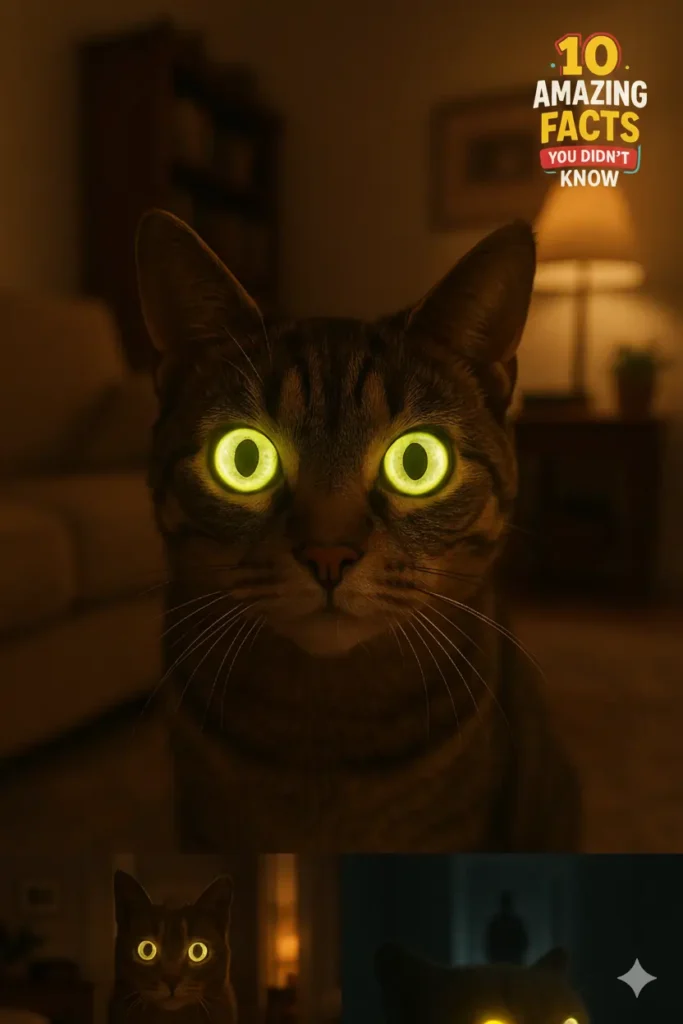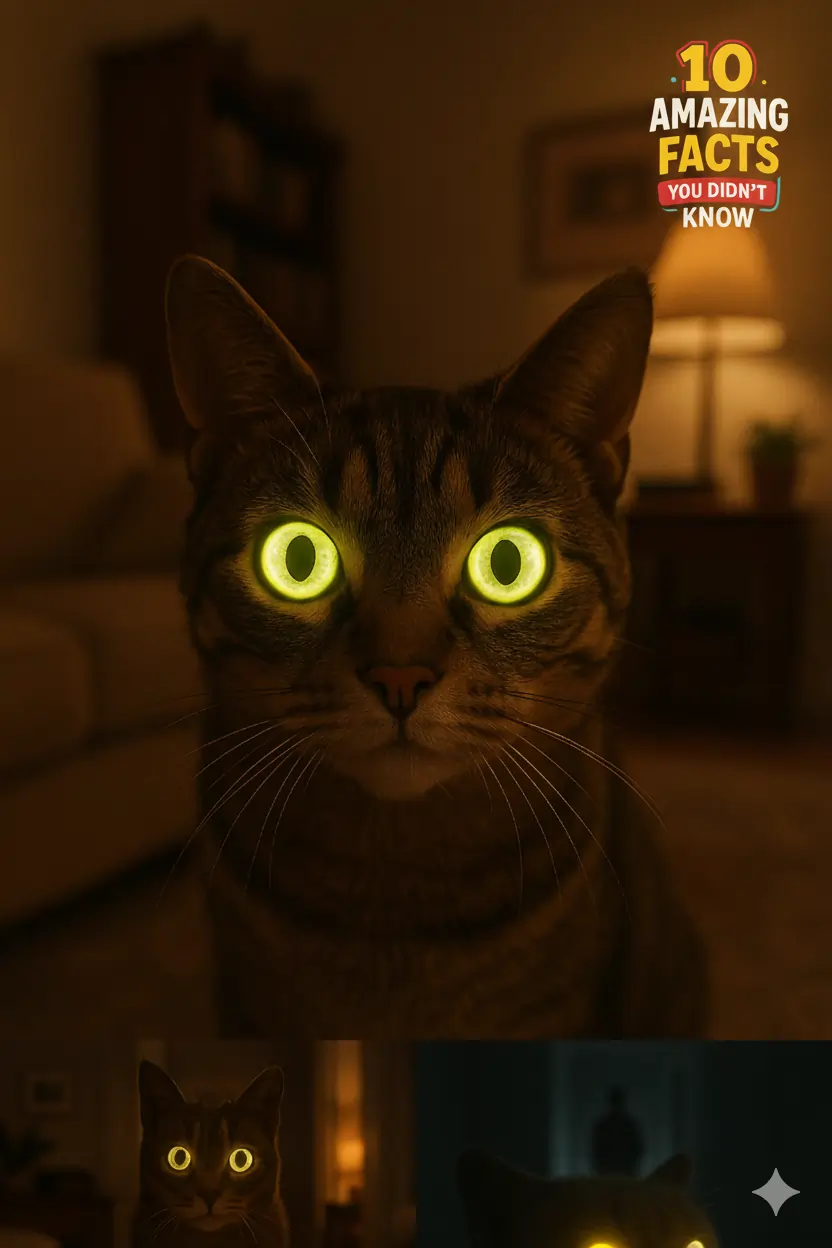The Surprising Way Your Cat Sees You: A Deep Dive Into Feline Perception
Cats have fascinated humans for thousands of years. From being worshipped in ancient Egypt to becoming internet superstars, their mysterious behavior continues to captivate us. But here’s a question most cat owners never stop to consider: how does your cat actually see you?
The answer is far more surprising—and heartwarming—than you might think. In this article, we’ll explore the science, psychology, and quirky feline instincts behind the way your cat views you. By the end, you’ll not only understand your pet better but also feel closer to them. And if you want to keep uncovering jaw-dropping insights like this, you’ll see why thousands of readers and viewers are subscribing to 10amazingfactsudidntknow.com for exclusive deep dives, videos, and behind-the-scenes content.
Do Cats See Us as Humans—or Just Big Cats?
Researchers in feline psychology have long debated whether cats understand that humans are a separate species. Surprisingly, evidence suggests they don’t. According to Dr. John Bradshaw, anthrozoologist and author of Cat Sense, cats interact with humans using the same social behaviors they use with other cats.
Think about it: when your cat rubs against your legs, kneads your lap, or even nips gently at your fingers, those are exactly the ways they’d interact with another feline. They don’t adjust their behavior for you; instead, they treat you as part of their own species. In other words, your cat probably thinks you’re just a giant, slightly clumsy cat—and that’s a compliment.
Cat Vision vs. Human Vision
To really understand the surprising way your cat sees you, it helps to look at their vision. Cats have evolved as nocturnal hunters, and their eyesight reflects that.
-
Color Range: Cats can’t see the full spectrum of colors like we do. They perceive a world mostly in shades of blue and yellow, with reds and greens looking dull. So while your bright red sweater looks bold to you, to your cat it may just seem like another shade of brownish-gray.
-
Night Vision: Cats have six to eight times more rod cells in their eyes than humans, giving them excellent low-light vision. This is why they’re so active at dawn and dusk—their eyes are fine-tuned for twilight hunting.
-
Field of View: Humans have about a 180-degree field of vision, but cats stretch beyond that to around 200 degrees. They sacrifice some sharpness in exchange for motion detection, which is why they notice the tiniest bug on the wall while you might miss it completely.
When your cat looks at you, they’re not seeing the fine details of your face the way another human would. Instead, they focus on your movement, your smell, and the way you interact.
Why Cats Act Like You’re “Theirs”
Ever noticed your cat sitting on your laptop, knocking objects off shelves, or curling up on your favorite jacket? These aren’t random acts of chaos. They’re instinctive behaviors linked to how cats perceive you and their environment.
-
Scent Marking: Cats have scent glands on their face and paws. When they rub against you, they’re leaving behind their scent to mark you as part of their family.
-
Gift Giving: That dead bug or unfortunate mouse on your doorstep? It’s your cat’s way of saying, “You’re one of us.” In their mind, they’re teaching you to hunt.
-
Lap Kneading: This kitten behavior carries into adulthood. It’s a comfort mechanism, but it also signals affection—they only knead with those they consider family.
So when your cat does something you find “strange,” it’s often their way of bonding with you.
Expert Insights on Feline Psychology
Dr. Bradshaw isn’t alone in his findings. A study published in Animal Cognition revealed that cats recognize their owners’ voices but may choose not to respond. Unlike dogs, who have been bred for obedience, cats remain independent thinkers. This doesn’t mean they don’t love you—it just means they interact on their own terms.
According to Dr. Kristyn Vitale, a feline behavior expert at Oregon State University, “Cats see their humans as social partners. They form bonds similar to those seen in dogs and even infants.” In other words, your cat isn’t aloof because they don’t care; they simply show affection differently.
Real-Life Example – My Cat Thinks I’m One of Them
When I first adopted my tabby, Luna, I noticed she’d often bring me toy mice and drop them on my pillow. At first, I thought it was cute. Then, one morning, she proudly placed a beetle on my bed. Disgusting? Yes. But it was also a reminder: in Luna’s mind, she was teaching me how to survive—just as a mother cat does for her kittens.
This real-world behavior underscores the research: cats perceive us not as outsiders but as fellow cats who need guidance.
Why Understanding This Makes You a Better Cat Parent
Recognizing that your cat sees you as family changes how you interpret their actions. Instead of labeling them as “weird” or “aloof,” you’ll begin to see their behaviors for what they really are: signs of love, loyalty, and connection.
-
That head bump? It’s a feline hug.
-
That slow blink? It’s a sign of trust.
-
That obsession with your keyboard? It’s because they want to be close to you—even when you’re distracted.
By shifting your perspective, you’ll feel more bonded with your cat, and they’ll thrive knowing you understand their world a little better.

FAQs – The Surprising Way Cats See Humans
Q: Do cats think humans are cats?
A: Research suggests yes. Cats use the same behaviors with humans as they do with other cats, meaning they likely don’t recognize us as a different species.
Q: Why do cats bring dead animals to their owners?
A: It’s a form of teaching and bonding. Cats think of you as family, and sharing prey is part of their social behavior.
Q: Can cats recognize human faces?
A: Cats rely more on voice, scent, and movement than facial recognition. They may not “see” your face the way we see each other, but they know who you are.
Q: Why do cats knead on their owners?
A: It’s a leftover kitten behavior linked to comfort and affection. Cats only knead on people they feel safe with.
Q: Do cats love their owners?
A: Yes. Studies show cats form secure attachments to their owners, much like dogs and infants. They just express love differently.
Final Thoughts – And a Call to Action
The next time your cat curls up beside you or stares at you with unblinking eyes, remember: in their world, you’re not just a roommate or a food provider. You’re family. You’re their giant cat companion, their trusted partner, their safe space.
At 10amazingfactsudidntknow.com, we love uncovering mind-blowing truths like this—and we don’t stop here. From bizarre science to hidden histories, our mission is to keep surprising you with the facts you never knew you needed.
👉 Subscribe today to unlock premium articles, exclusive videos, and full access to our growing library of jaw-dropping content.
👉 Join our YouTube community to watch these facts come alive in engaging, shareable videos.
The world is full of hidden wonders. Don’t just skim the surface—dive deep with us. Subscribe now, support our mission, and never see your cat (or the world) the same way again.

